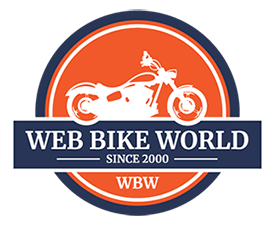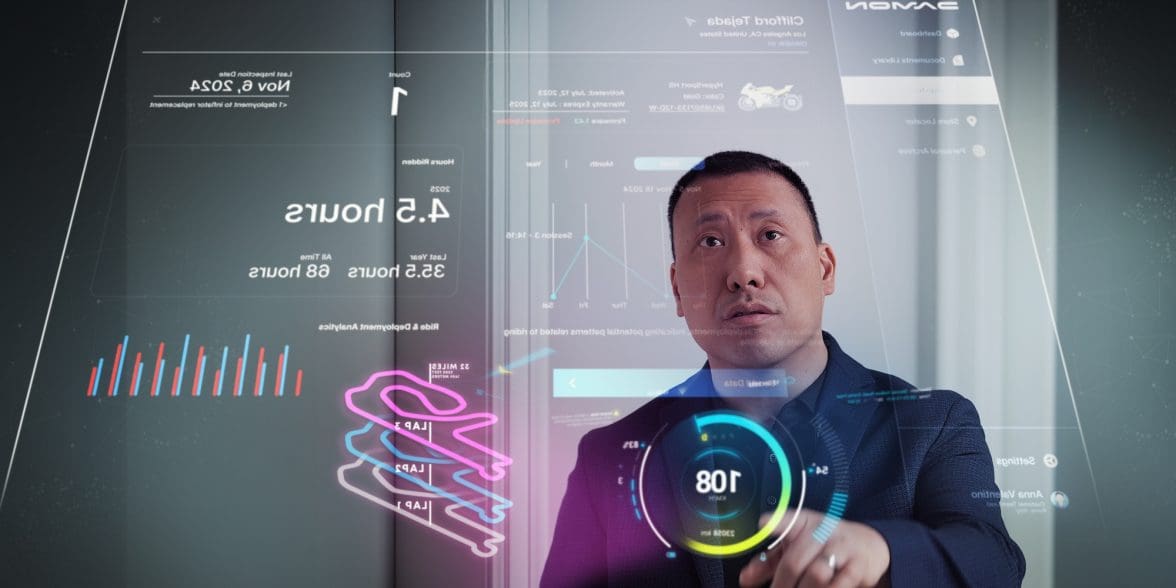In every interview, there are topics that are easy to discuss and topics that don’t come as easily to the table… and that’s how it should be. The goal of any reputable bit of content in the Powersports industry is to align the reader with the manufacturer and the company’s archetypes, goals, and intentions in an effort to gain clarity and perspective in the pursuit of clear comprehension. Anything else beyond this, to me, does a disservice both to the interviewer and the interviewee – which is why, when major strategic changes take place at companies like Damon Inc. (formerly Damon Motorcycles), it’s worth taking a moment to hear directly from the people behind the decisions.
Dominique Kwong was generous in the time set aside to provide these answers for us, and it’s been a pleasure building out from this interview, both for the final product and our additional news list. As Damon Inc. pivots to an “asset-light” business model, the company pans out from a front-and-center view of the HyperSport to the complete ecosystem: the vehicle itself, the finances, and the overall experience.
Let’s get into it.

Tell us how you came back to Damon Inc., and what you were up to in the years that you left.
My former business partner Jay and I, we wanted to make motorcycling safe for everybody – for our friends today, for the riders of tomorrow… We went on that journey and developed these technologies, and the motorcycle was always a part of the picture. It was always a platform that we wanted to use to promote our safety systems. Time went on, and I made a personal decision to continue to focus on safety in a much broader scope. As luck would have it, I met the CEO of Alpinestars in 2022 at CES. He and I had a fantastic conversation, we aligned a hundred percent on making riders safer; after that I accepted a role as an executive consultant of Alpinestars, becoming their head of electronics for two years before I rejoined Damon.
To this day, I’m very proud of the suit that they gifted me because my family is everything to me, and all the symbols and the characters on my suit represent all my aunties, uncles, my cousins… every time I ride a motorcycle, I carry my family with great responsibility on my back, and I’m always thinking about that in my work with Damon’s safety tech.
Can you tell us more about how your work at Alpinestars tied into your return to Damon?
Lots of people tell me, “Alpinestars is an apparel company. Why electronics?” I was able to work as their head of electronics because they make airbag systems, which are in and of themselves complex data-gathering systems to benefit the user for the sake of safety. I don’t know if many know this, but I came from a background as a radio engineer. I used to make smartphones before they were smart, and I’ve had almost 30 years in things like manufacturing, consumer electronics, automotive… I used to also make things for security in various governments, big data centers, all of that. The tie-in to Damon was my indoctrination into the world of data or, more specifically, information and how it relates to an end consumer/manufacturer/industry. Data was always king, and data still is everything.
Anyways, while I was working with Alpinestars, I averaged 165 days a year, travelling 320,000 miles all over the world as a brand ambassador for Tech-Air to all their dealers and distributors. I was the contact who understood the nuances of these newly developed technologies. I helped them in their product training and servicing, and, unbeknownst to me, as I was doing all of this for Alpinestars, I was also gathering market intelligence for my return to Damon.
In December of 2024, I got a call. “Hey, we need you back.” I came back and saw where we were at with the company, and I was able to bring all of the years of knowledge that I had accumulated from Alpinestars to Damon in the middle of a changing market.
Where do you feel Damon Inc. is at in the race that is EV technology today?
It kind of feels like running a marathon, especially in the world of EVs. Everybody started so fired up, then some runners dropped off because the road was really hard, the race was long, etc. With Damon’s initial idea, I understood the team’s “head down” approach, but we didn’t realize that everyone had turned right while we kept on going straight. Luckily, we didn’t fall so far behind that we couldn’t catch up and be part of the pack today.
I give the team in the past a lot of credit for having that “let’s just go” mentality and conviction to continue to do what they did… but coming back, we had to adopt the idea of “eyes up,” too. If we, as a company, do not see and adapt to change in the market, then we may be left behind.

What changes are happening at Damon Inc.?
First of all, Damon is now a publicly traded company; as such, I want to be as transparent as I possibly can, but I also have to be cognizant of the public interest. Not everybody who’s on the leadership board can vote on what I am about to say here, so I want to be respectful. For the record, they’re all aware of this interview I’m doing, and they’re really keen on me telling the story. 🙂
We’ve definitely had a change in company focus. Our commitment is no longer just to produce great vehicles; now more than ever before, we remain committed not just to the ride but to opening up a digital platform and enhancing the digital experience for the rider. This allows us to not only keep up with the direction of that “EV marathon,” but to find an avenue to pull ahead because that’s our differentiator in a pack rooted in tradition.
As for what’s going on at Damon, I’ll say this: Hardware – particularly the manufacturing side of things – is a very capital-intensive business, and tariff strategies and trade winds are currently moving around like a cyclone. We originally had a more traditional vision: Build the factory, build the bikes, rinse and repeat. Then, we stepped back and realized that if we want to compete in this market, we need to be capital lite and be open on how and with whom we produce our products. Coming from the world of consumer electronics originally, contract manufacturing is a way of life because it provides a good way of flexibility scalability without the burden of high capital expenditure. I take Apple as a good example; this is a company that makes millions of products and uses a contract manufacturing model.
Sure, having full ownership of your factories is part of the automotive industry; however, I would sooner choose a contract manufacturing partner or partner with another motorcycle company that has invested a lot of money in that infrastructure and say, “Hey, you keep doing what you do, we’ll do what we do, and together we can make something really meaningful.”
Where is the HyperSport? Is It Coming?
I do want to answer customers’ questions here, so I will do my very best. I know our customers have waited a long time for this product. I’ve been waiting for a long time as well.
We are committed to it. When I say this, I want to be clear that we are committed to the technologies and the motorcycle itself; however, that thing needs more time. This bike has a level of technology that has never been put together before, and our team needs to time to ensure that it works the way we and our customers expect.
To advance this goal, we decided to take the technologies that are the most mature and partner with Engines Engineering to create and deliver the HyperSport Race, a track-focused vehicle, as quickly as possible. We wanted to show the customer the holistic experience of mobility, which is a combination of the vehicle, the digital experience, and the financial accessibility. We have a vision for what the entire trifecta looks like, but we’re not selfish, and we’d love to work with other companies. In doing so, we are able to support what we each do best.
If what our partners brought to the table is hardware, great; they can go for it, and we’ll bring the software. I don’t care if riders buy a Damon Motorcycle or another brand’s motorcycle as long as it has “Powered by Damon” or “Intelligence by Damon” on the side of it.

Can you speak to the fears some have voiced about the potential of Damon™ I/O?
I know some people are worried about this one, especially when it comes to their personal privacy, so I want to assure everyone: Damon will not use private data. We analyze trends based on contextual data. This means that the tech is simply taking the data that someone generates every minute they’re on one of these vehicles, adding context to it, and generating insights and information that result in a beneficial action that’s specific to the individual. That’s it.
Right now, we are providing an example of what contextual data and automated confidence can bring to the HyperSport Race and the Damon™ I/O products as a unified ecosystem. We have devices that constantly gather information regardless of the activity we are performing, so in the context of riding, data is generated and stored. What makes Damon.io unique is that we are:
- Taking this stored data
- Combining it with other data (i.e., vehicle, environment, etc.)
- Adding context
- Creating information and insight specific to the user
We’re also working on answering questions like, “How can I automate your experience?” “How can I allow you to keep two eyes on the road ahead of you so you can just absorb it rather than having to constantly look at a phone or set up a camera?” This software’s aim is to automatically connect all your devices, all these islands of technology, for you, automatically. If I’m scheduling a lunch appointment and need to know exactly how long it’s going to take me to arrive because I don’t want to guess anymore, Damon™ I/O understands your riding tendencies and factors that into the route navigation in order to give you a true and accurate travel time.
I guess what I’m trying to get across is that, ultimately, we are creating technology that gives the rider more control of their ride so they’re less distracted and their ride is more intuitive. As I get older, the value per unit of time that I place on time goes higher and higher, and the need for technology to assist us (not to control us) is aimed at providing more of that time.
How is Damon™ I/O as an AI model kept within boundaries for the user’s sake? How do you intend for this product to make money for Damon?
I want to clear some things up here, if you will allow me.
The limits of Damon™ I/O are based on the context of the activities that our customers perform.
This is your information, you are in control of that information, and you are also in control of how you want that information to be contextualized back to you. The information is valuable, sure, but only in the context of your own ride. All information is provided by consent from the owner, and it is the owner who will always have the ability to choose to opt in.
Damon™ I/O has multiple opportunities to generate revenue. We have a platform that not only serves the end consumer but also enterprise customers like OEMs or Tier 1 suppliers. Ultimately, this contextual data provides critical information to allow the consumer or business to make the best decision.
Any final thoughts to leave our reader with as we close this interview?
To me, back when the HyperSport came out, people saw the bike and thought, “It’s all about the bike, it’s all about the bike,” but it was always about more than the bike. It’s always been about how we provide information in order for our customers to maintain control in their personal mobility journey in the safest way possible.
We were personified by a vehicle, but today, we are more than that. We are a personal mobility company combining the vehicle, digital experience, and accessibility to create a solution for this and future generations to come.


